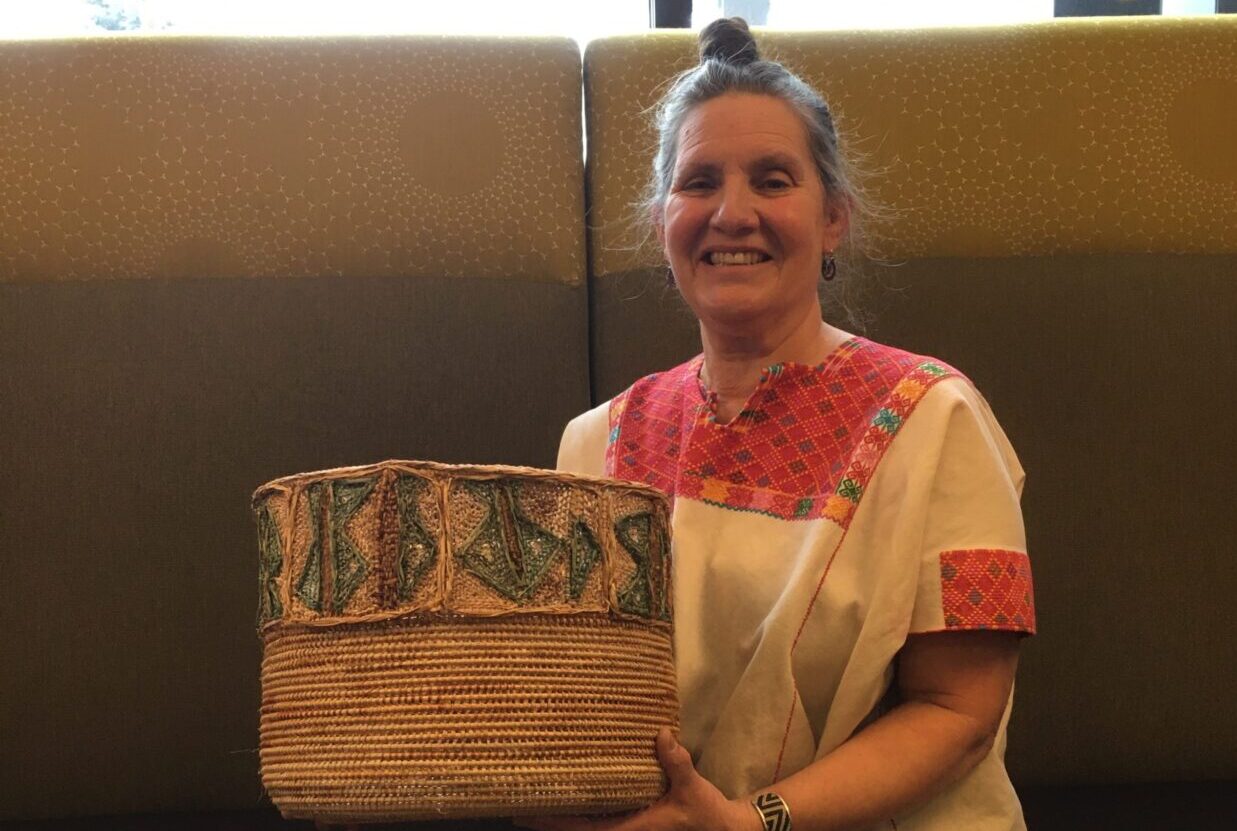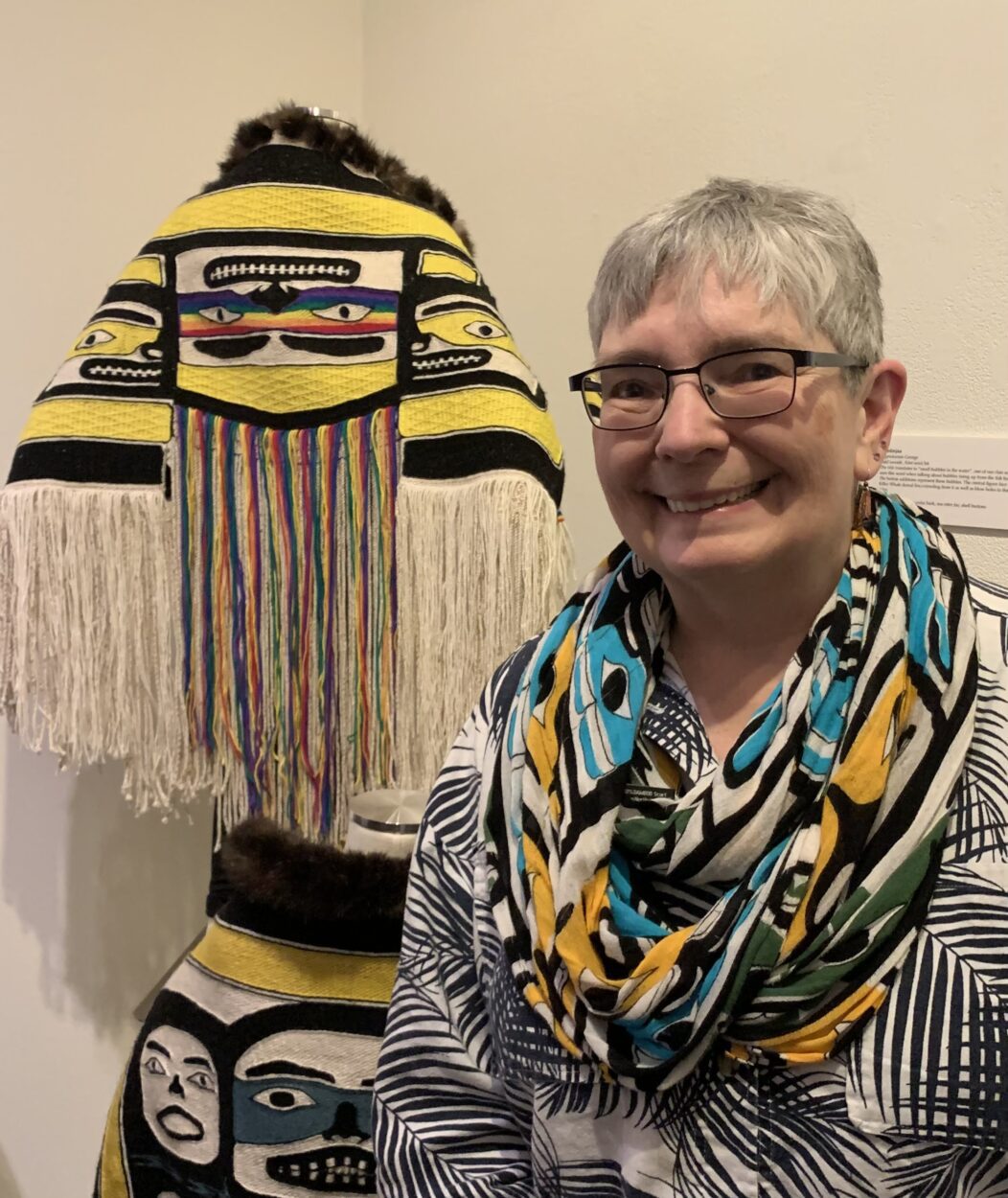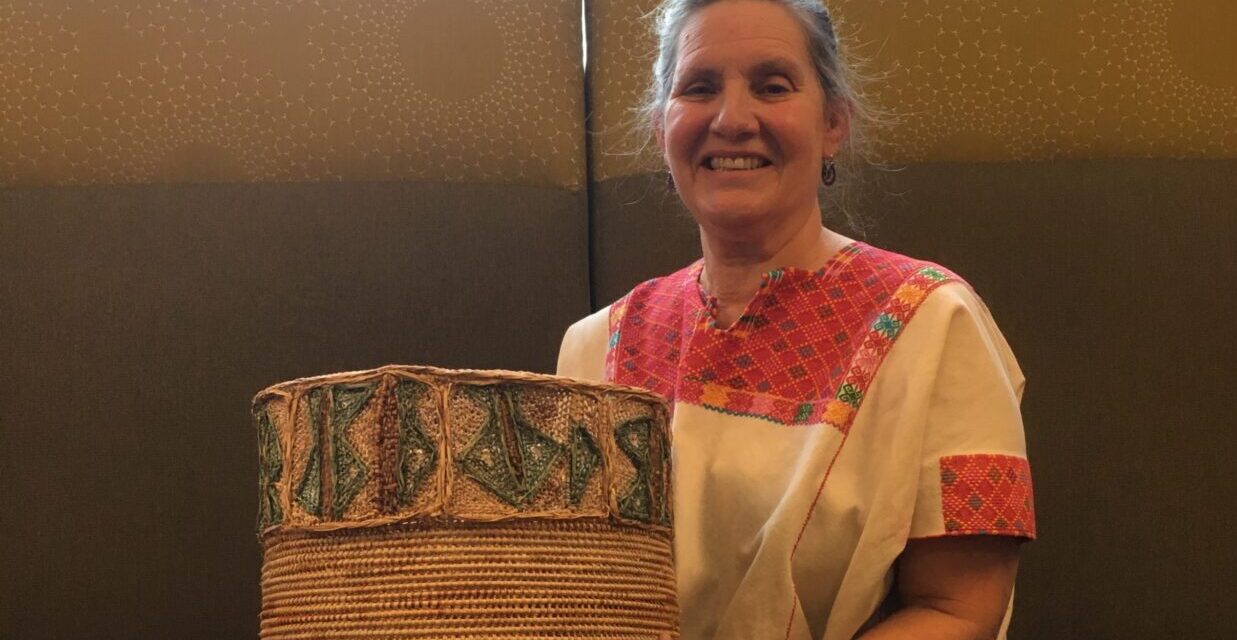
A master fabric artist and basket weaver from Ketchikan led a workshop in Petersburg in late April, where she connected with local artists. Kathy Rousso combines basket weaving styles and materials from Southeast Alaska and Central America.
Rousso came to Southeast Alaska for a job with the U.S. Forest Service in the 70s. Then, in the late 80s and early 90s, Rousso was one of the first students who learned traditional Ravenstail weaving, which had been lost for 200 years.
“The main techniques I use are twining and knotless netting in my work,” said Rousso. “The twining is the technique that is used for the traditional Northwest Coast basketry, and the Ravenstail and Chilkat.”
Rousso was mentored by legendary weavers in Southeast Alaska, like Delores Churchill. She went on to teach the technique for Indigenous organizations across the Southeast. Rousso said weaving helped ground her during her husband’s recovery from a liver transplant.
“The good thing is that I can weave anywhere,” said Rousso. “When my husband was in the hospital, I wove in the hospital, in his room, the whole time I was there. There’s a whole series of baskets that I did during that time.”
Rousso is a non-Indigenous person and is hesitant to explain the difference between Ravenstail and Chilkat weaving, for fear of misrepresenting a culture she doesn’t belong to.
Debra O’Gara said the two styles of weaves are similar, but Ravenstail came first. O’Gara is a Petersburg-based tribal government scholar and artist. Her Lingít name is Djik Sook and she is a Raven of the Teey Taan clan. She’s weaved for fifteen years and has her work on display at the Juneau-Douglas City Art Museum — though she still calls herself a beginner. O’Gara attended Rousso’s basket-weaving workshop in late April.
“Ravenstail actually predates Chilkat,” said O’Gara. “It’s woven from left to right on warps that are made out of mountain goat wool that’s been processed and spun.”
The warp is the yarn stretched out vertically on a loom before the weaver passes more yarn, or “weft,” horizontally through the fabric. O’Gara said that out of the Ravenstail style evolved the Chilkat design.
“What happened is the process of Formline, which is Indigenous to this area,” said O’Gara. “The weavers started doing curves and ovoids and circles. And they weave in both directions — left to right, and right to left.”
Another difference between the two designs is that the Ravenstail warp doesn’t contain yellow cedar bark. Debra said Southeast Alaska weavers are dealing with a shortage of yellow cedar. According to the U.S. Forest Service, the species is in decline across its range due to something called fine root freezing injury, which occurs when low snowpack exposes the tree’s roots to lethally-cold temperatures in early spring.
O’Gara said the yellow cedar shortage has inspired some weavers to experiment with new fibers. Rousso brought plant materials from Central America for her participants to work with.
“I think the thing that was most interesting was the materials that they were using to weave,” said O’Gara. “They were using those big wide leaves that come off the agave plant. [Rousso] brought some of that with her, that we were able to use for a weaving project, which was really fun.”

Rousso specializes in backstrap weaving, which is a type of traditional weaving that originated in South and Central America. She learned these textile techniques during her time as a Fulbright Scholar in Guatemala.
“From then on, every year, I have been going back and forth between Ketchikan and Guatemala,” said Rousso. “Besides the net bags, I learned about hammock making, horse gear — all sorts of other things made from agave fiber.”
But Rousso has always gravitated towards baskets. O’Gara said she was excited to see all of the different styles Rousso picked up from weavers in Central America.
“I think every society, every country has people who do weaving,” said O’Gara. “It’s a universal language. It’s a universal activity.”
O’Gara is a former judge, and she’s currently researching pre-colonial Lingít justice systems for her PhD. Through her research, she’s learned that, for Lingít and Haida people, the traditional practice of weaving is about storytelling.
“Many of our weavings and carvings were really living documents that recorded historical events, relationships, or were or made to help commemorate a solution to a problem,” said O’Gara. “Weavings helped to document our history, where we’ve come from, our place in this world.”
O’Gara hopes to incorporate her practice and study of weaving into her research project — not only to learn how people solved disputes before colonization, but to explore the possibility that any of those practices can help develop present-day Tribal justice systems in Alaska.
Some of Kathy Rousso’s agave fiber and cedar bark baskets will go on sale at Ketchikan’s annual Blueberry Arts Festival. A series of Chilkat robes, including one of O’Gara’s, is on display at the Juneau-Douglas City Museum, and will be available to the public until October.










